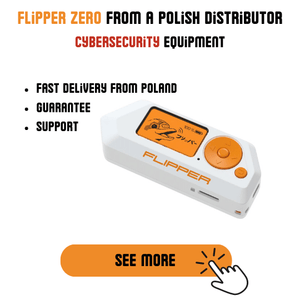
Zero Trust – Why Lack of Trust Is the Best Cybersecurity Strategy?
The concept of zero trust security assumes that no one in the corporate network can be trusted without prior verification. Every access to data must be controlled and limited to the necessary minimum, which significantly improves the organization's security.
What will you learn from this article?
-
What is zero trust security.
-
What principles and technologies make up an effective zero trust model.
-
You'll learn about the advantages and challenges of implementing this strategy.
Zero trust – the model that turns your system into a digital fortress
What is zero trust all about? Imagine that you've built and furnished a house with many valuable things and memories. Would you leave the doors wide open, trusting that no uninvited person will enter? Or would you hand out keys to everyone who claims to be your friend? Of course not! Instead, you install solid locks, cameras, alarms, and limit access only to those you really know and trust. This is exactly how zero trust works – an approach to cybersecurity that assumes no one can be trusted by default, and every system access must be thoroughly verified.
What is the zero trust model?
This approach, similar to protecting your home, is based on the principle of distrust and strict access verification. The zero trust model is a philosophy that assumes no device, user, or application should be considered trusted by default, even if they are inside the organization's network. Every attempt to access resources is thoroughly verified, which significantly increases the level of protection against attacks such asransomware (which was the topic of one of the latest posts on the Sapsan blog), or the recently intensifyingphishing.
What are the three principles of zero trust?
The foundation of the Zero Trust model consists of three important principles:
-
Never trust, always verify – every access, regardless of the user's location, device, or application, must be authorized. In practice, this means that both internal and external users must go through an authentication process before gaining access to resources.
-
Minimize access – users and applications receive access only to those resources that are necessary to perform their tasks. Why? Because the principle of least privilege reduces the risk of unauthorized access or abuse.
-
Identity verification – every system access should be carefully monitored, and the identity of the user or device should be verified using various mechanisms, sometimes usingYubikey hardware keys from Yubico, multi-factor authentication (MFA), or risk analysis.
It's worth noting that these principles are reflected in the zero trust model architecture, which is based on five security pillars covering different areas of the IT system.
What are the 5 pillars of zero trust architecture?
The five security pillars in the zero trust model include identity, devices, network, applications, workloads, and data. To better illustrate how this works, imagine you're running an exclusive club. This isn't an ordinary venue that anyone can enter – it's a place where every guest must be thoroughly checked, and the staff constantly monitors whether someone is trying to get in illegally. The zero trust model in cybersecurity works similarly, based on strict verification of every attempt to access company resources, and protection is never based on the assumption that "someone is already inside, so they're trusted." Let's take a closer look at what elements make up this digital protection:
1. Identity verification – for the chosen few only
Going back to the exclusive club analogy – everyone who wants to enter must show an ID, and in the case of VIPs – a special membership card. In the Zero Trust model, strong authentication plays the role of such a card, e.g., hardware keys that provide almost impossible-to-forge user identity confirmation. Even if someone knows the password, they won't get in without the physical key.
2. Access control – this way please, but no further
Even if the club grants someone entry, it doesn't mean they can enter every room. Some have access only to the main hall, others can enter the backstage, and still others to the VIP room. Similarly in zero trust, users and applications get only the minimal permissions necessary for their work. IT administrators precisely determine who can view, edit, or copy specific data, which reduces the risk of internal abuse or cybercriminal attacks.
3. Network segmentation – walls instead of open doors
Imagine that an intruder suddenly appears in the club. If there are no restrictions on moving around the building, they can freely move from one room to another, causing more and more damage. Network segmentation works like a system of airlocks and security measures that prevent an attacker from freely moving through the IT infrastructure. Even if a hacker gains access to one network segment, they won't be able to automatically extend the attack to other company resources.
4. Monitoring and risk analysis – the guard who never sleeps
The best club employs guards who not only watch the entrance but also track suspicious guest behavior. In the world of cybersecurity, this role is played by monitoring and risk analysis systems that analyze network traffic in real-time, detect anomalies, and respond to potential threats. Tools such as SIEM (Security Information and Event Management) act as digital guardians who immediately catch unusual activities – e.g., when someone tries to access data at an unusual time or from an unknown location.
5. Application and device protection – because the weakest link is the user
Ultimately, even the best security measures can prove useless if employees don't follow basic security principles. That's why all devices and applications must be properly protected – through data encryption, regular updates, and vulnerability analysis. Otherwise, just one click on a fake phishing email is enough for cybercriminals to take control of the company network.
Benefits and challenges of the zero trust model
The benefits of implementing the zero trust model include better protection against cyberattacks, effective protection against phishing and ransomware, and minimizing the risk of unauthorized access. Additionally, this strategy helps organizations meet regulatory requirements such as GDPR or NIS2.
However, implementing Zero Trust comes with certain challenges. This process requires time, resources, and a thorough redesign of access management systems. It's also important to continuously monitor and adjust security policies, and the effectiveness of the entire approach largely depends on the level of user awareness and responsibility. Despite these difficulties, zero trust remains one of the most effective data protection models and is worth considering for implementation in your organization.











